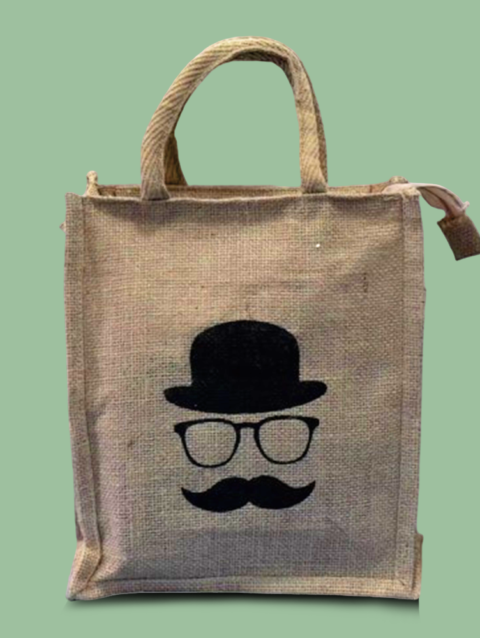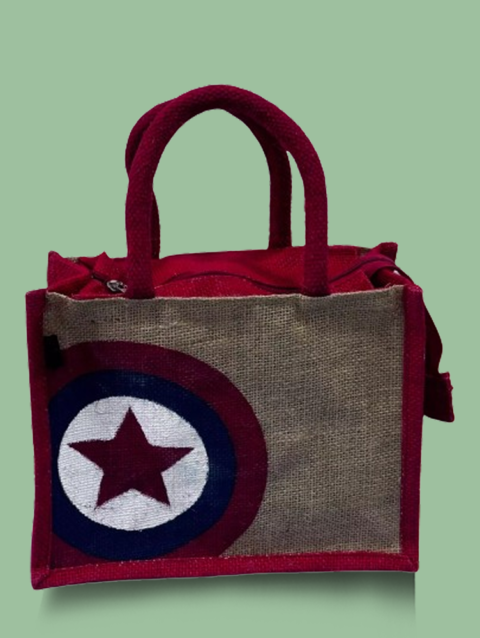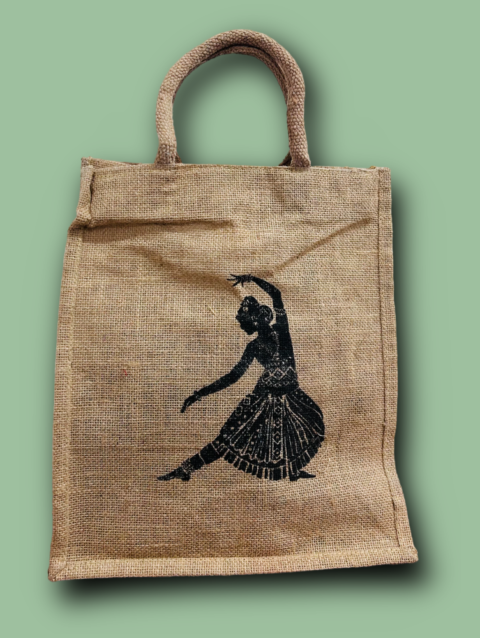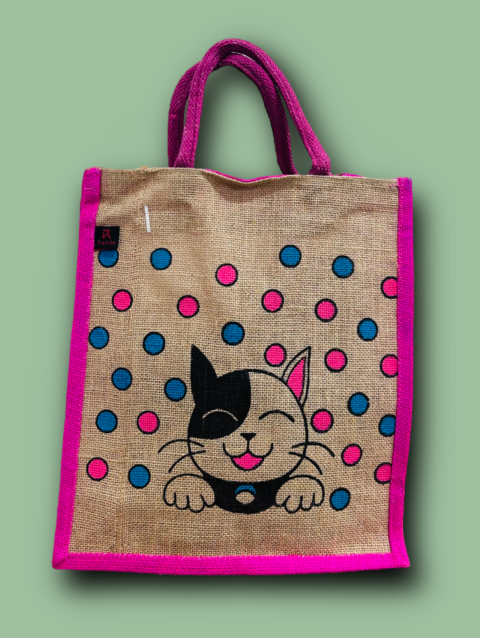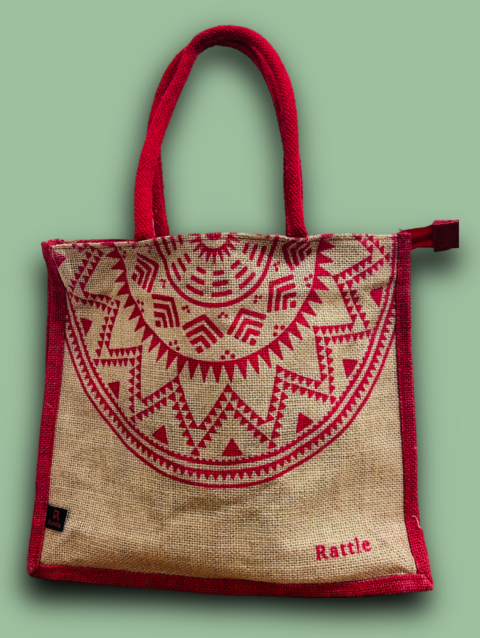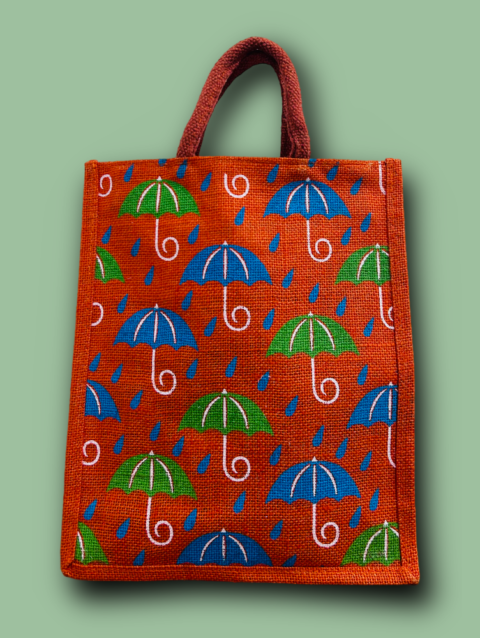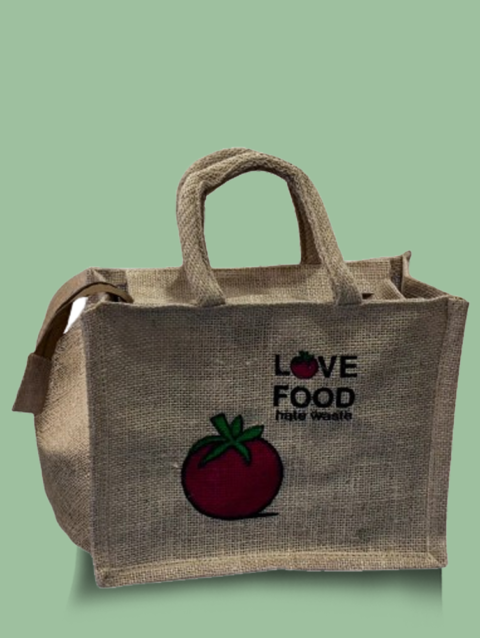
How to Identify High-Quality Jute Bags in India?
In the quest for sustainable living, jute bags stand out as an eco-friendly alternative to plastic. However, with the increase in demand, the market now features a range of jute bags of varying qualities. Here’s a detailed guide to help you identify high-quality jute bags in India, ensuring you make an informed and sustainable choice.
1. Check the Fabric Quality

Key Points:
- Fiber Type: High-quality jute bags are made from premium, long-staple jute fibers. These fibers are stronger and more durable than short-staple varieties.
- Weave Tightness: Examine the weave of the fabric. A tight weave indicates high quality, as it enhances the bag’s durability and strength.
- Feel of the Fabric: The fabric should feel coarse yet sturdy. Avoid jute that feels overly rough or brittle, as it may be of lower quality and prone to breaking.
Detailed Check:
- Hold the fabric up to light. A high-quality jute bag will not allow much light to pass through, indicating a tight weave.
- Rub the fabric between your fingers. It should feel firm and resilient, not flimsy or weak.
2. Inspect the Stitching
Key Points:
- Seam Strength: High-quality jute bags have strong, even stitching. Double-stitching is a good indicator of durability, especially at stress points like the edges and handles.
- Thread Quality: The thread used for stitching should be strong and resistant to fraying. Look for thick, tightly twisted thread.
Detailed Check:
- Inspect the inside and outside seams. The stitches should be uniform and closely spaced.
- Pull gently on the seams to ensure they hold firm and do not show signs of opening.
3. Evaluate the Handles
Key Points:
- Reinforcement: Handles should be reinforced with additional stitching or padding to enhance their strength and comfort.
- Attachment Points: Check how the handles are attached to the bag. High-quality bags will have securely stitched or riveted handles.

Detailed Check:
- Tug on the handles to check for secure attachment. They should not feel loose or wobbly.
- If the handles are padded, ensure the padding is evenly distributed and securely stitched.
4. Check for Lining
Key Points:
- Material: Some jute bags come with a lining made from cotton or other durable fabrics. This lining protects the contents and enhances the bag’s structure.
- Stitching: The lining should be neatly stitched and fit snugly within the bag.
Detailed Check:
- Look inside the bag for any lining. It should be firmly attached to the bag’s interior without any loose or frayed edges.
- The lining material should feel smooth and durable, not thin or flimsy.
5. Examine the Print Quality
Key Points:
- Ink Type: High-quality jute bags use eco-friendly, non-toxic inks for printing. These inks are safer for the environment and less likely to fade.
- Print Clarity: The printed design or logo should be sharp and clear without any smudging or blurring.
Detailed Check:
- Run your fingers over the printed area. The print should not peel or flake off.
- Check the colors. They should be vibrant and consistent without any bleeding.
6. Assess the Weight Capacity
Key Points:
- Durability: High-quality jute bags can carry substantial weight without tearing or stretching.
- Weight Limits: Check the product specifications for weight limits. A good jute bag should handle at least 5-10 kg.

Detailed Check:
- Ask the seller for the bag’s weight capacity. Reputable sellers will have this information readily available.
- Test the bag by carrying items of varying weights to ensure it maintains its shape and strength.
7. Look for Certifications
Key Points:
- Fair Trade: Indicates ethical production practices and fair wages for workers.
- Organic Certifications: Ensure the jute is grown without harmful pesticides.
- ISO Certifications: Reflect adherence to international quality standards.
Detailed Check:
- Look for labels or tags indicating certifications. These are usually prominently displayed.
- Verify the authenticity of the certifications by checking the certifying organization’s website if possible.

8. Smell the Bag
Key Points:
- Natural Odor: High-quality jute has a natural, earthy smell.
- Chemical Odor: Avoid bags with a strong chemical odor, as this indicates the use of harmful substances in processing.
Detailed Check:
- Smell the inside and outside of the bag. The scent should be mild and natural.
- If the smell is strong or unpleasant, consider it a red flag for potential chemical treatment.
9. Check the Reputation of the Seller
Key Points:
- Reviews and Ratings: Online reviews and ratings can provide insight into the quality and reliability of the seller’s products.
- Brand Reputation: Established brands with a history of quality and customer satisfaction are more likely to provide high-quality products.
Detailed Check:
- Research the seller online. Look for customer feedback on platforms like Google Reviews, Amazon, or their own website.
- Ask for recommendations from friends or family who have purchased jute bags.
10. Consider the Price
Key Points:
- Value for Money: While high-quality jute bags may cost more initially, they offer better durability and longevity, making them more cost-effective in the long run.
- Suspiciously Low Prices: Extremely low prices can indicate poor quality materials and craftsmanship.

Detailed Check:
- Compare prices across different sellers. Extremely low prices compared to the market average can be a red flag.
- Assess the bag’s quality in relation to its price. A slightly higher cost for significantly better quality is often worth it.
Conclusion
Identifying high-quality jute bags in India involves a thorough examination of fabric quality, stitching, handles, lining, print quality, weight capacity, certifications, smell, seller reputation, and price. By following these detailed guidelines, you can ensure that your jute bag is durable, stylish, and genuinely eco-friendly. Make an informed choice and contribute to a sustainable future with every jute bag you carry.


